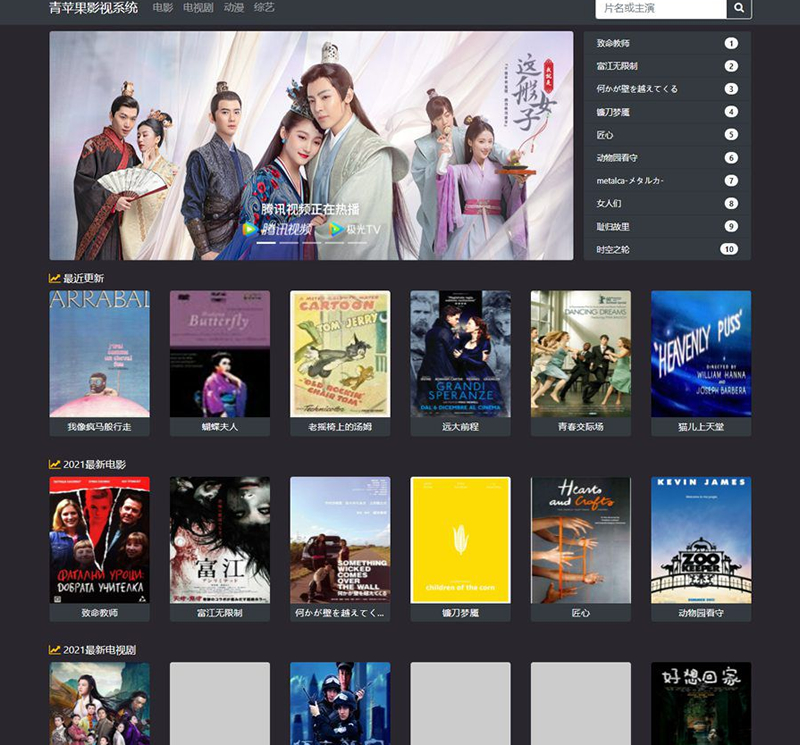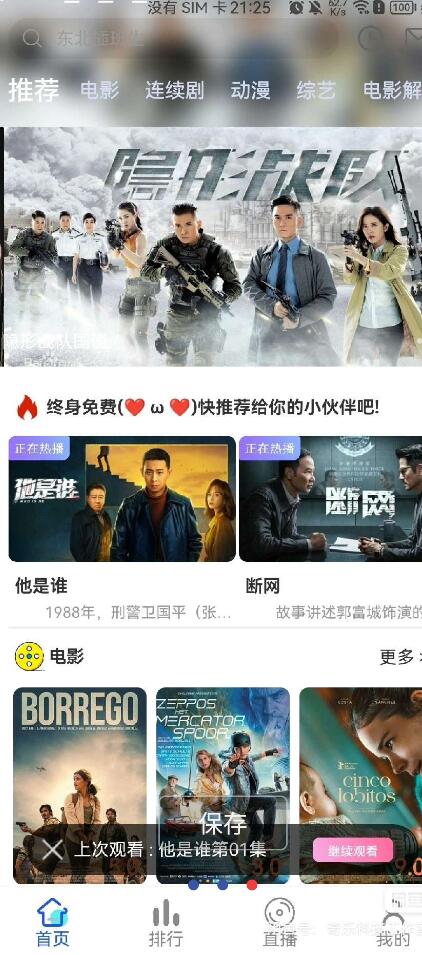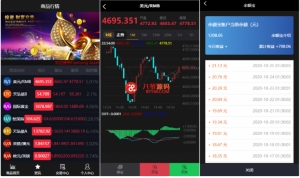
function list
1. Data module-one-click connection to the API interfaces of film and television resource stations on the market. Now it supports commonly used film and television CMS interfaces such as FeiCms, MacCms, MaxCms, and SeaCms.
2. Self-compliant templates-The system supports a set of templates that adapt to multiple terminal entrances such as computers, mobile phones, tablets, and public accounts. It can also independently set the separation of mobile and PC templates.
3. On-demand module-The basic online on-demand function of the video module uses the famous Dplayer as the H5 player and supports common formats including mp4, m3u8, flv, mp3 and other formats.
4. Weixin Official Accounts-You can connect with the Weixin Official Accounts developer tool (film and television robot system). After connecting, WeChat users can directly search for corresponding videos through the reply keywords for on-demand.
5. Delayed image loading-The website's front image list uses on-demand image loading technology to speed up users 'access to the website and save server bandwidth.
6. Conversion from simplified to traditional Chinese characters-The website front desk has integrated automatic conversion from simplified to traditional Chinese characters. After the web page is loaded, speech conversion will automatically stop based on the reader region. It is the first choice for a traditional on-demand station.
7. Focus map module-Through the focus map module, videos or advertising pictures can be mainly recommended and displayed on the first screen of the home page. It is managed independently by mobile and PC, and supports mobile phone swiping.
8. Advertising module-The system reserves multiple advertising spaces, which are managed independently by mobile and PC. You only need to add advertising code in the background corresponding to the advertising spaces, and you can extend and call them in the template through tags.
9. Link module-The system reserves home page friendship links and full-station links. Friendship links are used for exchange between webmasters, and full-station links are mainly used for internal links on a series of keywords and themes.
10. Navigation module-Navigation component calls based on DaiCuo background development framework. The main navigation is the system's entire station channel link, and the icon navigation is the mobile home page icon widget.
11. Classification module-Classification component design based on DaiCuo back-end development framework can support first-level classification and second-level classification, and support independent design of different classifications calling different resource stations.
12. Search module-supports the same keyword to call search results from different resource stations. The search conditions depend on the types supported by the resource stations, usually for the lead role, title, and director searches.








Comments0